The IoT industry chain constitutes the IoT industry chain including chip providers, sensor suppliers, wireless module (including antenna) manufacturers, network operators, platform service providers, system and software developers, intelligent hardware vendors, system integration and application services. Eight links of the provider.
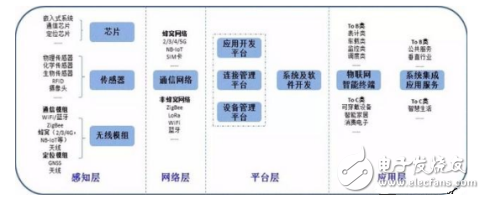
(1) Chip provider: The brain of the Internet of Things; low-power, high-reliability semiconductor chips are one of the key components essential to almost all aspects of the Internet of Things. Depending on the function of the chip, the chips required in the IoT industry include chips integrated into sensors and wireless modules to implement specific functions, as well as embedded microprocessors embedded in terminal devices to provide "brain" functions. Traditional international semiconductor giants such as ARM, Intel, Qualcomm, Freescale, etc.; major domestic manufacturers include: Huawei Hisilicon, Spreadtrum, Beijing Junzheng, Huatian Technology.
(2) Sensor supplier: shaping the five senses of the Internet of Things; the sensor is essentially a detection device, which is a device for collecting various types of information and converting it into a specific signal, which can collect identity, pressure, temperature, humidity, light, sound. , smell and other information. Commonly used sensors can be divided into three categories: physical sensors, chemical sensors, and biosensors. The sensor industry is currently dominated by several leading companies in the United States, Japan, and Germany, and representative companies in China's sensor market include Hanwei Electronics, Goer shares, Gaode Infrared, Naiwei Technology, Huagong Technology, and Yuanwang Valley. Wait.
(3) Wireless module manufacturers: The key wireless modules for networking and positioning can be divided into two major categories: communication modules and positioning modules. Common LAN technologies include WiFi, Bluetooth, ZigBee, etc. Common WAN technologies mainly include 2/3/4G, NB-IoT and unlicensed bands of LoRa, SigFox, and other technologies working in licensed bands. Different communications correspond to different technologies. Communication module. At present, foreign companies still dominate the wireless module, including Telit, SierraWireless and so on. Domestic manufacturers are also relatively mature, able to provide complete products and solutions, including Huawei, ZTE, Huanxu Electronics, Mobile Communications, Corecom, and China Mobile Internet of Things.
(4) Network operators: Control the channels of the Internet of Things; network operators are the most mature links in the IoT industry chain. The Internet of Things network refers to a converged network formed by various communication networks and the Internet, including cellular networks, local self-organizing networks, private networks, etc., and thus relates to communication devices, communication networks, SIM manufacturing, and the like. The Internet of Things can largely reuse existing telecom carrier networks, such as cable broadband networks and 2/3/4G mobile networks. It is an important promoter of the development of the domestic Internet of Things. Therefore, this session will focus on the three major telecom operators and closely related SIM card manufacturers, such as Eastcom Peace, Hengbao, Tianyu Information.
(5) Platform service providers: Improve the effective management of the Internet of Things; as an important part of equipment aggregation, application services, and data analysis, the Internet of Things platform must not only implement the “management, control, and battalion†of the terminal, but also upward. Application development, service and system integration provide PaaS services. According to different platform functions, it can be divided into three types: device management platform, connection management platform and application development platform. Foreign platform vendors include Jasper and Wylessy. There are mainly three types of manufacturers in the domestic IoT platform enterprises. One is the three major telecom operators, which mainly starts with building a connection platform. The other is Internet vendors such as BAT and JD. They use their traditional advantages to build equipment management. And application development platform; third, platform vendors in their respective segments, such as Yitong Century, Hetai, Shanghai Qingke.
(6) System and software developers: to create the arteries of the Internet of Things; Internet of Things systems and software generally include operating systems, application software, etc., which can make IoT devices operate effectively. Among them, the operating system (OS) is a program that manages and controls IoT hardware and software resources, and is the most basic system software. Other applications are supported by the operating system. At present, the main issues of the IoT operating system are some IT vendors, such as Google, Microsoft, Apple, Huawei, and Ali. Application software development mainly focuses on areas with strong versatility such as car networking, smart home, and terminal security, such as Shenglu Communication, Haier, and Venus.
(7) Intelligent hardware manufacturers: provide terminal bearers of the Internet of Things; intelligent hardware refers to devices that integrate sensor components and communication functions, can access the Internet of Things and implement specific functions or services. According to the customer-oriented purchase, it can be divided into 2B and 2C categories. Class 2B includes metering, such as smart water meters, smart gas meters, smart meters, industrial monitoring instruments, etc., vehicle front loading, industrial equipment and public service monitoring equipment; 2C mainly refers to consumer electronics, such as wearable devices, Smart home, etc. The 2B manufacturers with relatively concentrated terminal production enterprises include Sanchuan Wisdom, Xintian Technology, and Hanwei Electronics.
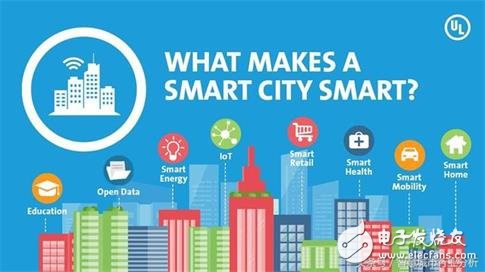
(8) System integration and application service provider: implementer of IoT application landing; system integration is to identify and integrate multiple products and technologies into a complete solution according to the requirements of a complex information system or subsystem. the process of. At present, mainstream system integration practices include device system integration and application system integration. Facing the complex application environment of the Internet of Things and equipment in many different fields, system integrators can help customers solve various types of equipment, subsystem interfaces, protocols, system platforms, application software, etc. with subsystems, building environment, construction coordination, Organization management and staffing related issues ensure that customers receive the most appropriate solution.
At present, relevant domestic system integration and application service providers include Huawei, ZTE, Yuanwang Valley, and Hanwei Electronics. In terms of spatial distribution of the Internet of Things industry, China has initially formed four major regions, namely, Beijing-Tianjin, Shanghai-Wuxi, Shenzhen-Guangzhou, and Chongqing-Chengdu, with the Bohai Sea, the Yangtze River Delta, the Pearl River Delta, and the Midwest. Agglomeration of the development of the Internet of Things industry space pattern. Each industrial cluster is independent and unique. The Bohai Rim region with Beijing-Tianjin as its core is an important R&D, design, equipment manufacturing and system integration base for the domestic Internet of Things industry. The region's key supporting technologies have strong R&D capabilities, high-level application and popularization of sensory nodes, diversified network transmission methods, rapid integration of integrated platforms, and extensive application of Internet of Things, and have basically formed a relatively complete IoT industry development system architecture. .
The Yangtze River Delta region with Shanghai-Wuxi as the core is the origin of China's Internet of Things technology and application, and has a unique first-mover advantage in the development of the Internet of Things industry. With the deep industrial foundation of the electronic information industry, the development of the Internet of Things industry in the Yangtze River Delta region is mainly positioned at the high-end link of the industrial chain. Starting from the core links of core software and hardware products and technologies of the Internet of Things, the implementation of standards and patent strategies will form the national Internet of Things industry. The gathering of core and leading enterprises. The Pearl River Delta region with Shenzhen-Guangzhou as the core is an important production base for domestic electronic machines. In the development of the Internet of Things industry, the Pearl River Delta region focuses on IoT equipment manufacturing, software and system integration, network operation services, and application demonstration areas, focusing on core key technology breakthroughs and innovation capacity building, focusing on IoT infrastructure construction and cities. Management informationization level, and rural information technology applications. The Internet of Things industry in the central and western regions with Chongqing-Chengdu as the core is developing rapidly. All key provinces and cities have combined their own advantages to lay out the Internet of Things industry and seize market opportunities. Hubei, Sichuan, Shaanxi, Chongqing, Yunnan and other key provinces and cities in the central and western regions rely on their advantages in research and education and human resources, as well as RFID, chip design, sensor transmission, automatic control, network communication and processing, software and information services, etc. A better industrial base in the field, building a complete industrial chain and industrial system of the Internet of Things, focusing on cultivating leading enterprises in the Internet of Things, and vigorously promoting the demonstration project of the Internet of Things application.

Distribution of China's Internet of Things Industry Distribution of various links in the Internet of Things industry In parts of China, relying on the favorable economic environment, strong local financial resources, supporting industrial infrastructure and facilities, a large number of Internet of Things demonstration projects have been built, which have driven related technologies and products. A wide range of social applications provide a good atmosphere for the promotion and popularization of the Internet of Things. In general, the regions with better industrial bases determine their respective advantageous areas at the four levels of perception, network, platform and application. Beijing's scientific research strength is second to none, and the advantages of IoT technology R&D and standardization are obvious. It has IOT companies in the business areas of IoT system, such as Zhongxing Microelectronics, Datang Telecom, Tsinghua Tongfang, Wenjie Network, and Time Lingyu. R&D, key components and module manufacturing, machine production, system integration, software design and engineering services have formed a relatively complete industrial chain. Wuxi's sensing industry is strong, with strong urban comprehensive strength and good industrial base. The industries of integrated circuits, software and service outsourcing are among the best in the country. Wuxi planning focuses on strengthening perception, transmission, processing, and common technological innovation; adopting methods of introduction, cooperation, and cultivation to establish and improve various service platforms at all levels required for IoT technology innovation and industrial development. Shanghai has a strong industrial technology base and is one of the main sources of China's Internet of Things technology and applications.
Shanghai has advanced Internet of Things, such as advanced sensors, core control chips, short-range wireless communication technologies, networking and collaborative processing, system integration and open platform technologies, massive data management and mining, as key areas of development in the Internet of Things industry. Shenzhen is the leading city in the internationalization of China's electronic information industry. The electronic information industry chain is perfect and its innovation capability is strong. Shenzhen has formed its own unique advantages in the Internet of Things technology. It has advanced technologies and solutions in the industrial chain of information communication, sensing technology and radio frequency identification. Shenzhen plans to strengthen key technologies and applications of the Internet of Things; build an IoT sensor information network platform, IOT information exchange platform and application resource sharing service platform; increase the construction and integration of the city's Internet of Things sensor network; enhance the Internet of Things in Industrial applications. In addition to the above regions, many other regions have also planned the development of the Internet of Things industry as a key local development industry. The distribution of RFID and sensors, IoT equipment, related software, and system integration and application has become relatively concentrated. . With the continuous expansion of the scale of China's Internet of Things industry and the continuous expansion of application fields, the division of labor and integration between industry chains will follow, and the division of labor between regions will further emerge. Overview of the industry advantages of the Internet of Things industry in various regions of China
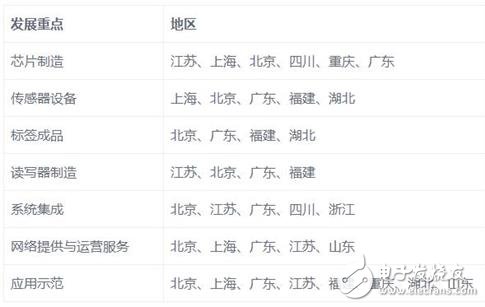
China is in the period of rapid development of the Internet of Things, the industry scale will exceed one trillion, and the industrial chain is basically perfect. Each region's industrial agglomeration has its own characteristics, and its development in chip manufacturing, reader-writer manufacturing, label product manufacturing, system integration, network provision and operation services and application demonstrations has its own focus, and the industrial field and public services have maintained coordinated development. Driven by the active strategy of “mass entrepreneurship and innovationâ€, the number of new three-board enterprises reached 267.
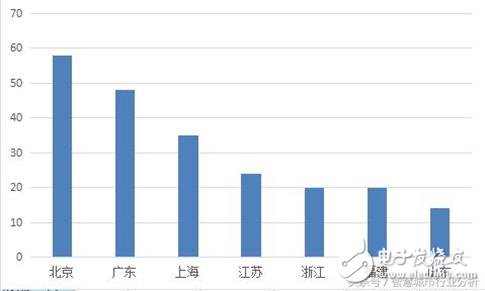
The number distribution of new three-board IoT enterprises
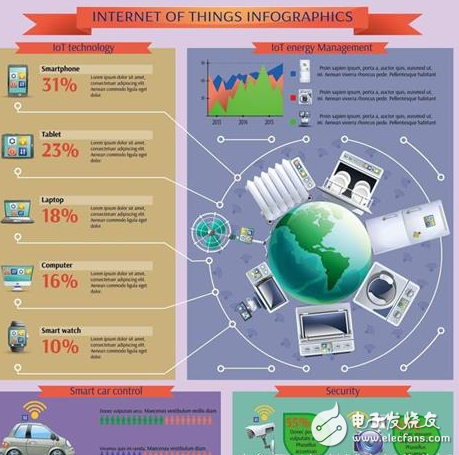
10 Mm Nano Tip,Smart Board Touch Screen Pen,Electronic White Board Pen,Infrared Touch Screen Pen
Shenzhen Ruidian Technology CO., Ltd , https://www.wisonens.com
![<?echo $_SERVER['SERVER_NAME'];?>](/template/twentyseventeen/skin/images/header.jpg)